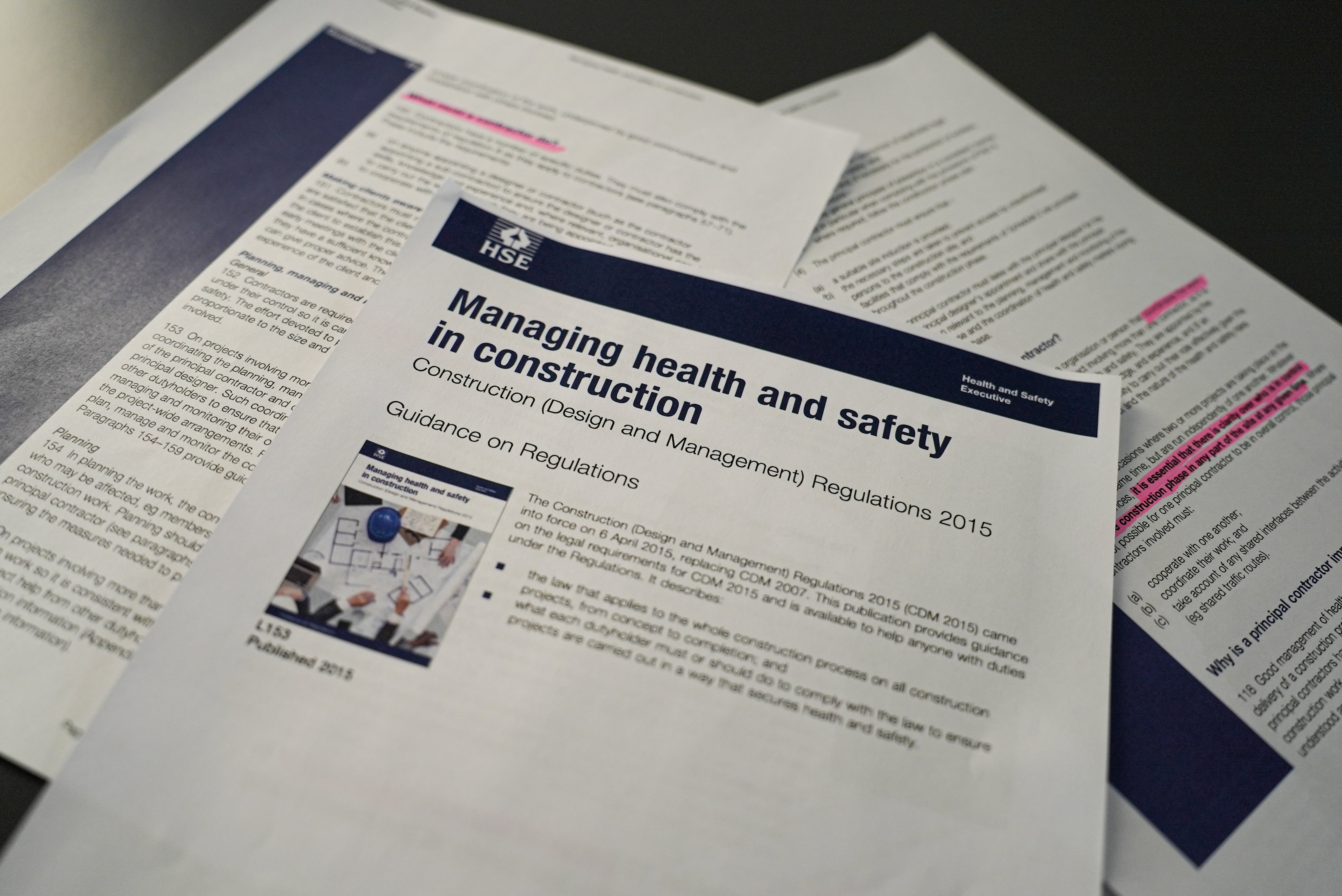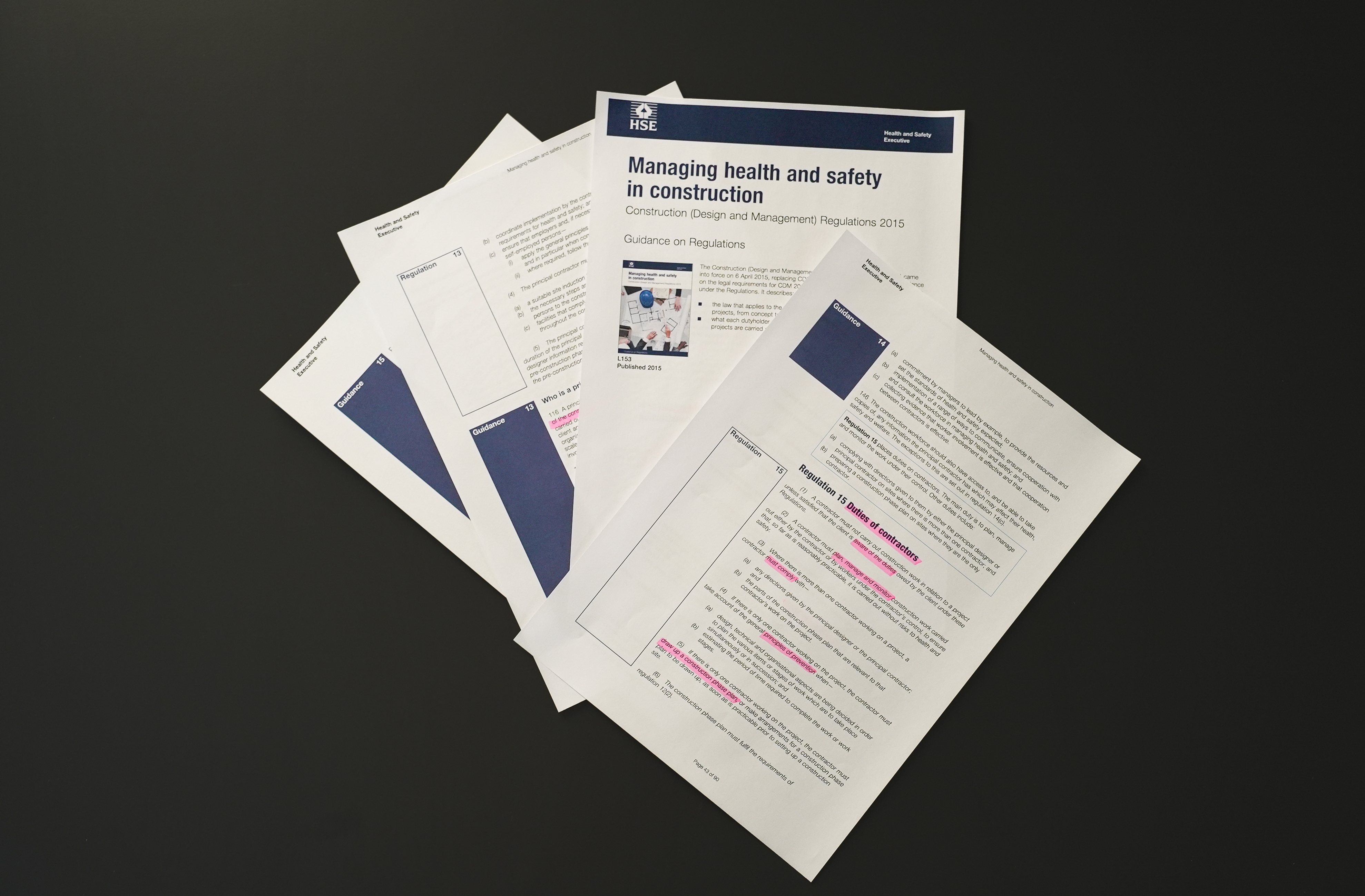If you're directly overseeing construction work or engaging in the management of construction teams, then you, by definition, are a contractor. This category encompasses a broad spectrum, ranging from sub-contractors and individual workers to sole traders, self-employed individuals, and businesses involved in construction activities. Even companies utilizing their own workforce for construction on their premises fall under this umbrella. It's crucial to note that the responsibilities of contractors extend to all types of workers under their control, be they employees, self-employed individuals, or agency workers.
Why is the role of a contractor so significant?
Well, contractors and the workers under their supervision face the highest risk of injury and health issues. Their ability to influence work processes directly impacts their safety and that of others. Contractors play a pivotal role in influencing the way work is executed to ensure the well-being of themselves and others affected. Their responsibilities extend to planning, managing, and monitoring the work, often in collaboration with the principal contractor, where applicable, to ensure effective control of risks. Effective coordination, supported by open communication and cooperation with other involved parties, is fundamental to achieving these objectives.
You might be wondering - what can you do to ensure health and safety in construction?
Introducing the CDM 2015 Regulations
The Construction (Design and Management) Regulations 2015 (CDM 2015), effective from 6 April 2015 and replacing CDM 2007, outline legal requirements for health and safety in the construction process. These regulations apply to all construction projects, covering the entire span from conception to completion. The guidelines specify the obligations of various duty holders involved in construction, including clients, designers, and contractors Whether for domestic or commercial projects, individuals overseeing construction work, known as duty holders, must adhere to CDM 2015 to ensure projects prioritize health and safety. Domestic clients, such as homeowners, have their CDM 2015 duties transferred to those executing the construction work on their behalf, while commercial clients, like landlords or developers, assume specific responsibilities outlined in the regulations.
Don’t worry – to make things easier, we have summarised the main duties of M&E contractors (or any subcontractors) as outlined in the CDM Regulations Guide.


Duty 1 - Making clients aware of their duties
Informing clients about their responsibilities is the first duty for subcontractors under CDM 2015. Before commencing any construction work, subcontractors need assurance that the client is aware of their duties outlined in the regulations. In situations where the contractor is the sole party involved, direct communication with the client is essential to establish this awareness. This communication can be seamlessly integrated into routine business practices, particularly during early project discussions with the client. Subcontractors should equip themselves with adequate knowledge of client duties relevant to the project, enabling them to provide appropriate advice. The extent of guidance offered should be tailored to the client's expertise and project intricacies.
Duty 2 - Planning, Managing, and Monitoring Construction Work
In the realm of construction projects under the CDM (Construction (Design and Management) Regulations 2015), subcontractors bear significant responsibilities in planning, managing, and monitoring the construction work under their jurisdiction. This pivotal duty is integral to ensuring the health and safety of all involved parties. Let's delve into the specifics of this duty:
Planning
- Contractors must diligently consider risks to both the public and those directly involved in the construction work.
- Coordination is crucial on projects involving multiple contractors, requiring each contractor to align their plans with project-wide arrangements.
- Collaboration with other duty holders, particularly the client providing pre-construction information, is essential.
Managing
The arrangements for managing construction work address the same considerations as those for principal contractors.
- Competence of Workforce: Principal contractors must ascertain that the individuals tasked with executing the work possess the necessary capabilities for the job.
- Risk Control Measures: Implementing effective preventive and protective measures is paramount for managing and mitigating risks associated with the construction project.
- Provision of Appropriate Resources: Principal contractors are responsible for supplying the right machinery, equipment, and tools essential for the successful execution of the project.
Visible leadership in health and safety is vital, involving setting standards, leading by example, and effective communication. A systematic management approach ensures workers understand project risks, health and safety responsibilities, and incident investigation procedures. Good supervision emphasizes risk awareness, commitment to control measures, effective consultation, and prompt addressing of unsafe conditions.
It's important to note that while principal contractors are responsible for overseeing safety practices, they are not required to conduct detailed supervision of subcontractors' work.
Monitoring
- Contractors are responsible for monitoring their work to ensure the appropriateness and adherence of health and safety precautions.
- Cooperation with other duty holders involves providing relevant information to the principal contractor for project-wide health and safety monitoring.
.jpg?width=4240&height=2832&name=DSC01230%20(1).jpg)
Compliance with Directions and Construction Phase Plan
- For projects with multiple contractors, strict adherence to health and safety directions from the principal designer or principal contractor is mandatory.
- Compliance with the construction phase plan, including site rules, is essential to maintaining a safe working environment.
Drawing up a Construction Phase Plan
- On single contractor projects, it is the contractor's responsibility to ensure the timely creation of a construction phase plan before setting up the construction site.
Duty 3- Appointment and Training of Workers
When a contractor appoints or employs individuals for construction work, certain considerations must be diligently addressed to uphold health and safety standards on the site.
Appointment Criteria:
Contractors are responsible for ensuring that appointed individuals possess the requisite skills, knowledge, training, and experience to execute their assigned tasks safely. This involves verifying that the individual either already possesses or is actively obtaining these qualifications. This also aligns perfectly with the requirements of the Building Safety Act 2022.
While industry certification cards may be presented, contractors should not solely rely on them as evidence. National Vocational Qualifications (NVQs) and Scottish Vocational Qualifications (SVQs) offer more robust assurance of an individual's competency. It's crucial to recognize that training alone is insufficient; newly trained individuals should be supervised and provided with opportunities to gain practical experience in varied conditions.
Assessing Unqualified Individuals:
When appointing individuals with skills but lacking formal qualifications, contractors may need to assess them in the working environment to ensure competence.
Training Assessment:
To determine the need for training, contractors should assess the existing health and safety skills, knowledge, training, and experience of their workers. This assessment should be compared with the skills required for the job, identifying any gaps as the 'necessary training.' Generally, if the assessed person demonstrates the required qualities, no additional training is necessary. This assessment should consider both CDM 2015 requirements and other health and safety legislation.
Ongoing Training Needs:
The assessment of training needs is an ongoing process throughout the project. Additional training may become necessary if working tasks change, new technology or equipment is introduced, or if there are alterations to the system of work. Regular evaluation is essential, especially for those who occasionally substitute for others, as their skills may decline without regular use.
Soft Skills Consideration:
Contractors should not only focus on technical skills but also consider 'softer skills,' including the ability to foresee and manage risks, anticipate potential mistakes, and communicate clearly. These attributes, along with technical skills, contribute to a comprehensive approach to worker competency.

Duty 4 - Providing Adequate Supervision
Contractors overseeing workers must guarantee the provision of suitable supervision during a construction project. The degree of supervision depends on the health and safety risks involved and the skills, knowledge, training, and experience of the workers.
Factors Influencing Supervision Level
Closer supervision is necessary for young, inexperienced, or those starting new work activities. Considerations for supervision levels include individuals' safety awareness, education, physical agility, literacy, and attitude. Even experienced workers may require supervision if lacking essential skills for the job.
Empowering Workers with Supervisory Assistance
Workers should be informed on accessing supervisory help, ensuring they have the necessary support even in the absence of a direct supervisor.
Role of Supervisors
Effective supervisors play a crucial role in management arrangements, possessing the requisite skills, knowledge, training, experience, and leadership qualities. Key attributes include strong communication and people management skills. Site workers promoted to supervisory roles should undergo nationally recognized training covering leadership and communication skills.
Supervisors play a vital role in management arrangements, engaging in activities such as team leading, conducting toolbox talks, coaching individuals, and supporting various means of communication with workers. In emergencies or situations where immediate risks necessitate work cessation, the supervisor serves as a crucial front-line decision-maker.
Duty 5 - Issuing Information and Instructions
Subcontractors bear the responsibility of furnishing their employees and those under their control with the necessary information and instructions to carry out their tasks safely. This encompasses the following:
- Conducting a suitable site induction if not provided by the principal contractor.
- Outlining procedures to be followed in the event of serious and imminent danger to health and safety. These procedures must explicitly state that any worker encountering such peril should cease work immediately, report it to the subcontractor, and move to a designated place of safety. The procedures should include details of the person to whom such instances should be reported, along with the authority to take prompt action. Additionally, these procedures should consider relevant requirements concerning emergency protocols, routes and exits, as well as fire detection and firefighting.
- Disseminating information regarding on-site hazards pertinent to their work, such as site traffic. This information should cover the associated risks and the control measures in place, including arrangements for managing site traffic.
Duty 6 - Welfare Facilities Provision
Contractors must provide welfare facilities meeting minimum standards. This responsibility pertains exclusively to the well-being of the contractor's own employees actively engaged on the construction site or individuals operating under their authority. The provision of these facilities must precede the commencement of any construction work and should be upheld until the project's completion.
In cases where multiple contractors are involved in a project, fulfilling this duty necessitates collaboration and agreement with the principal contractor, who shares a similar obligation to provide welfare facilities. Conversely, on projects managed by a sole contractor, this responsibility falls directly on the contractors.
Duty 7 – Working With Domestic Clients
When subcontractors undertake projects for domestic clients, their responsibilities remain consistent with those for commercial clients. They must fulfil duties in proportion to the risks associated with the project.
Conclusion
In conclusion, subcontractors in construction, including M&E contractors, play a critical role in ensuring the success and safety of construction projects under the CDM (Construction (Design and Management) Regulations 2015). Their duties are multifaceted, spanning from making clients aware of their responsibilities to planning, managing, and monitoring construction work. The implementation of the CDM 2015 regulations is paramount in fostering a culture of health and safety within the construction industry. The meticulous appointment and training of workers, provision of adequate supervision, issuance of clear information and instructions, and commitment to welfare facilities underscore the subcontractors' dedication to safeguarding the well-being of all individuals involved. By adhering to these duties, M&E subcontractors contribute significantly to the overarching goal of creating a secure and efficient construction environment.

